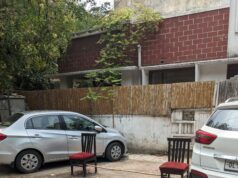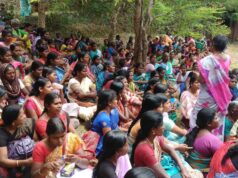There can be no argument that India needs cities that are sustainable, eco-friendly, self-sufficient and able to provide a better standard of living to its people. The parameters, though, need to be clearly defined to choose the initiatives, based on justice and equality.
Clarity on the scope, level and degree of participation and a clearly defining inclusion would help the initiatives not to deviate from the Smart Cities Mission (SCM).
The assumption that cities are the ‘engines of growth’ without counting the slum-dwellers and low-income population would not reflect the real image of contributors to growth and acknowledge the community.
The need of the hour is to create opportunities outside cities. A smart city with over-dense population would not sustain. Therefore, cities need smart villages to sustain themselves. Instead of copying the western perception of ‘smartness’, the mission must empathise with the situation in India and approve holistic smartness of both cities and villages.
Was it possible, for example, to avert migrant and hunger crisis in the cities if staggering investments would be made in the right direction to reduce inequalities? The proposals accepted by the SCM are largely focused on infrastructure and beautification with an area-based development approach. Yet, less than 2% of the fund has been utilised by the cities. The Mission is an ambitious dream, but ambiguous when juxtaposed against the prevailing realities.
The purpose and outcome of the Mission is explained in the SCM guidelines. It states: “there is no universally accepted definition of a Smart City. It means different things to different people. The conceptualisation of Smart City, therefore, varies…depending on the level of development, willingness to change and reform and aspirations of the city residents…there is no one way to defining a Smart City.”
A government-mandated mission is surrounded with wilful ambiguity around its definition, leaving no outcome-oriented planning and investment. It depicts a typical phenomenon of the top-down approach in governance. Though the Mission mandates participatory planning, it does not state its level, quantity, quality and approach.
While advocating for decentralised governance as its mandate, the Mission might end up re-centralising the process, aggravate inequality and increase path dependencies, which will negatively impact the lives of most people, yet keeping them in euphoric bliss of ‘the new Smart City’.
The Smart Cities Mission guideline states, “Nearly 31% of India’s current population lives in urban areas and contributes 63% of India’s GDP”. But the fact that a significant source of this growth comes from rural-to-urban migration has been overlooked. According to the Migration Policy Institute, for the first time, the urban population has grown faster than the rural population in India since the last Census.
In 2011, 68 million Indians lived in slums, comprising one-quarter of the population of India’s 19 cities with more than one million residents, say Rameez Abbas and Divya Varma of the Migration Policy Institute.
The current COVID-19 crisis scenario demands a radical paradigm shift. During the period when a high number of the labour force is on the exodus from cities, it is time to rethink the sustainability of investing humongous funds on making cities look smart and attract dense population. The right move could be to invest in creating opportunities far from the cities.
Who is the Smart City for? In India, one in every six-city a resident lives in a slum. The State of Slums in India, a central government report, states that urban poor, including slum-dwellers, have a key role in the development of cities, yet they are bypassed in this process of growth.
The SCM does not define a universally accepted definition of ‘smartness’ of the city, yet the ambitions declare their perceived image as influenced by expensive technology and global ICT-based ideas of Smart Cities.
Having said that, the 2011 Census of India’s `Housing Stock, Amenities and Assets in Slum’ found that 70% of the slum population has a television and smartphone users, almost equalling urban figures. Yet 64% of households were not yet connected to sewerage systems.
It put slum households in the country at 13.7 million. The Smart Cities Mission aims to ensure access to basic services for the people, including houses for the urban poor. But Housing and Land Rights Network, a New Delhi-based organisation, which works on research, education and advocacy related to housing and land rights, found questionable approaches to migrant labour and the homeless.
About 22% of seasonal migrant workers in India did not possess voter IDs or have their names on the voters’ list. A staggering 83% of long-distance migrants reported missing voting in elections at least once because they were away from home, seeking livelihood options, says a study entitled Political Inclusion of Seasonal Migrant Workers in India, published by Udaipur’s Aajeevika Bureau.
The SCM strongly banks on the ambition to create inclusive cities. One approach for an inclusive city is participatory planning where citizens are involved in planning ideas. The idea of inclusion and participation in the guidelines is, however, left unexplained.
A working paper of the Centre for Policy Research, states that the Mission is largely based on the assumption that ‘cities are the engines of growth’, which will invariably lead to the development for all. The Mission promises that it will reduce inequality in cities by providing economic opportunities to all citizens and uses participatory approaches to decision-making and hence deepens democratic structures, which will help improve the economic health of the city. But the idea of inclusion and participation in the guidelines is left unexplained. This outrightly excludes a major population group, who are supposed to be the central beneficiary of the Mission.
Instead of being pragmatic and promoting shared technologies among cities, the Mission supports only the performing cities with more funds without analysing the genealogy and causes of failures of the programmes in low-performing cities.
This increases inequalities and promotes unfair competition leaving the maladies of the sick governance unheard, unhealed, defeating the basic principle of an improved standard of living ‘for all’.
The Mission outlines three basic geographic modalities of development – area-based development (ABD), pan-city and Greenfields developments. It, however, largely focuses on ABD. With this, it ends up incentivising cities to inject bulk of their investments in a small area of the city. On an average, the area-based development covers nearly 7% of the area of the 99 cities while 80% of the funds are allocated for ABD projects of the budget, leaving only 20% of the budget for 90% of the city area, i.e. for pan-city and Greenfield development. Concentrating 80% of funds on a small area, which has 40% of holding by private investors and no say of local municipal institutions, makes the inequality more prominent.
The project defines ecology restoration, land and water bodies as some of the key goals in the Smart Cities Mission. Beautification is often misunderstood by most cities as part of ecological restoration, which has led a few cities to budget for slum demolition under this project.
Read more: Higher fuel taxes, fewer subsidies are good policy
Post Disclaimer
The opinions expressed in this essay are those of the authors. They do not purport to reflect the opinions or views of CCS.






